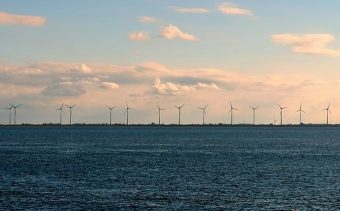
The Scottish government yesterday granted planning permission for a new 50MW floating offshore wind farm around 15km off the coast of Aberdeen, marking a significant step forward for the nascent clean energy technology.
Once operational, the farm will have capacity to generate enough electricity for 56,000 homes and should save an estimated 94,500 tonnes of carbon emissions every year.
The project is among the first large-scale demonstrations of floating wind technology, which promises to dramatically cut the cost of offshore energy by removing the need for fixed foundations and allowing turbines to be erected in deeper water where wind yields are higher.
“If [floating wind] technology can be demonstrated at scale, it has huge potential to help Scotland meet its energy needs and to develop a supply chain that can service opportunities elsewhere in Europe and in markets such as South East Asia and North America,” said Scottish Minister for Business, Innovation and Energy Paul Wheelhouse in a statement.
WWF Scotland director Lang Banks welcomed the news, adding that the continuing development of the floating offshore industry in Scotland is an encouraging sign that more energy can yet be harnessed from wind. “One thing is clear, if we are to meet our future climate and energy targets we will certainly need both more onshore and offshore wind in the future,” he added.
Efforts to develop floating offshore wind are continuing apace. Last month Highland Council approved proposals from Dounreay Trì – a subsidiary of Swedish developer Hexicon AB – to install two demonstrator turbines installed around 9km off Dounreay, Caithness, by summer 2018.
Meanwhile, the Hywind project, also in Scotland, is set to come online later this year, powering 20,000 homes with clean electricity.
The news came on the same day news agency Bloomberg published figures detailing how offshore wind energy costs are falling fast and are on track to undercut new power and nuclear plants in the coming years.
Source: businessgreen.com

